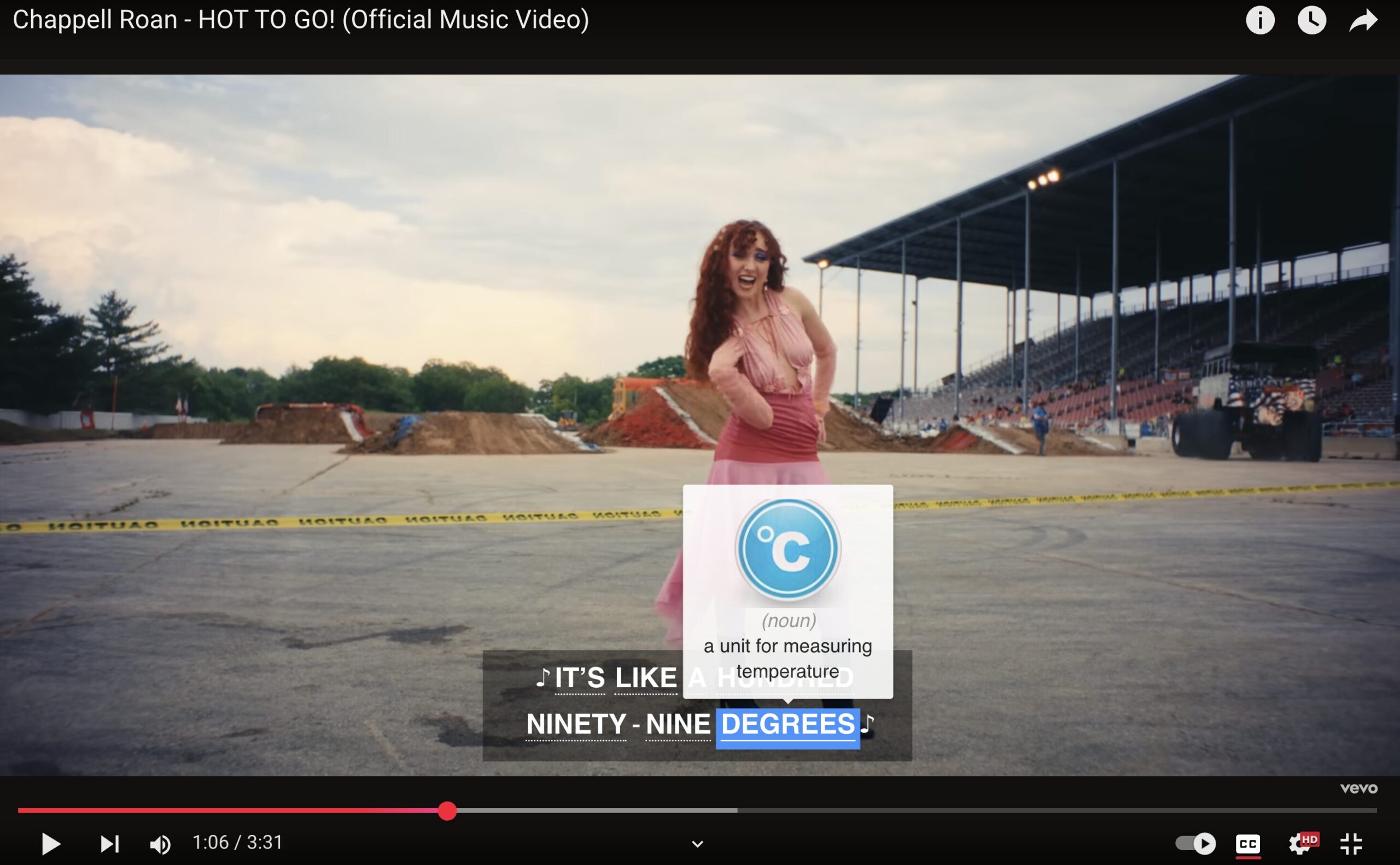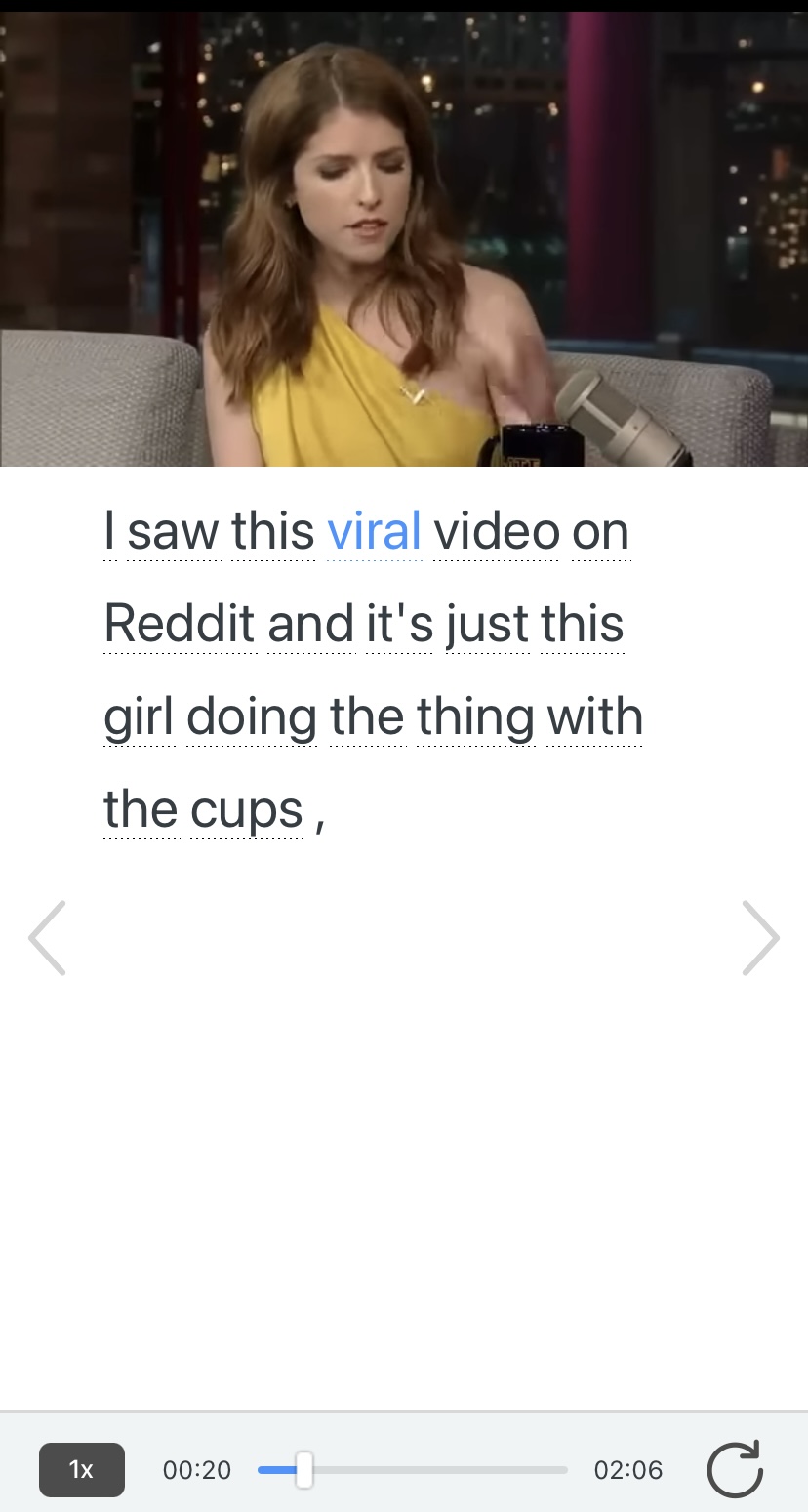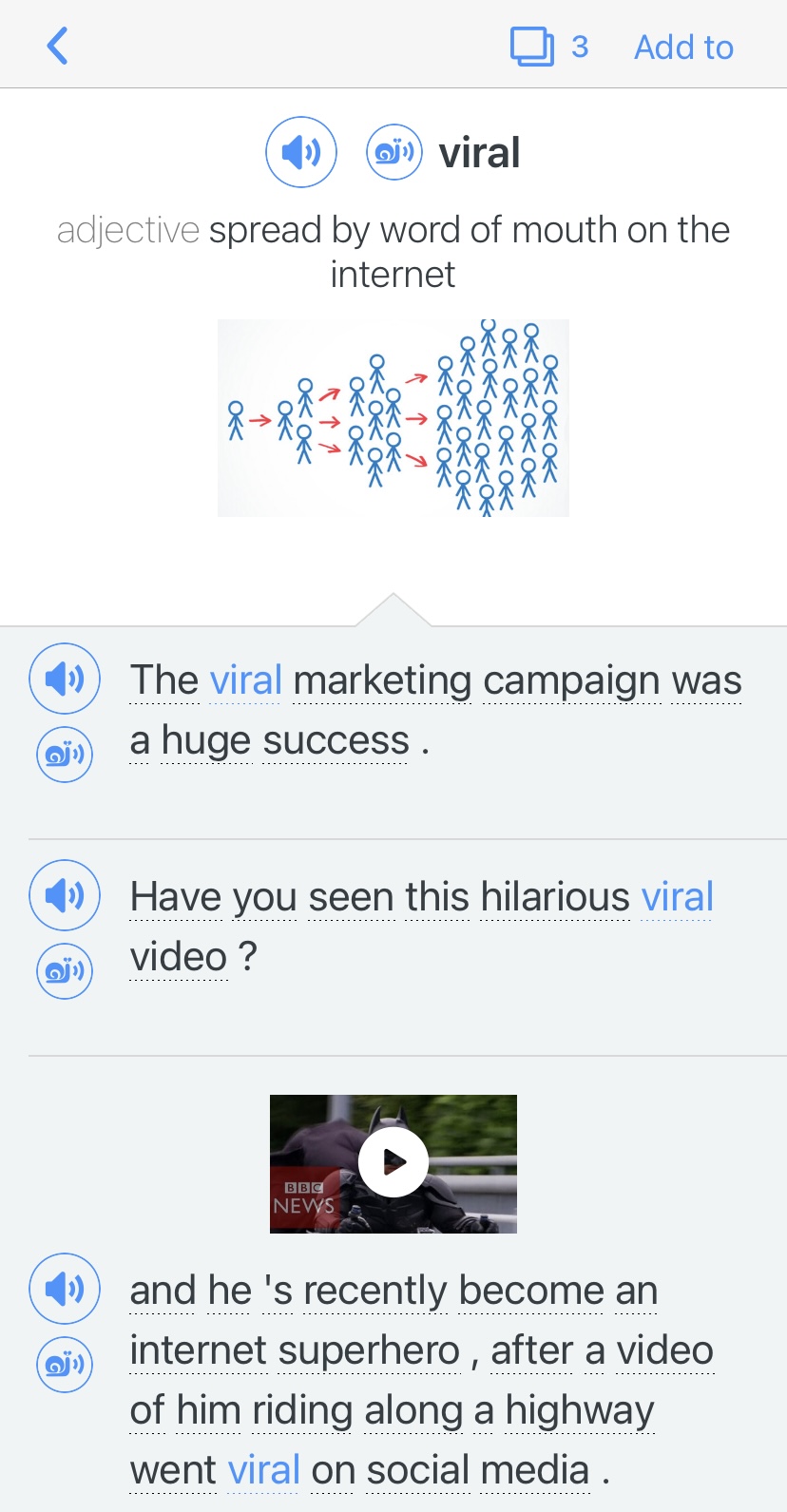Contents
- 1. Start with Your Devices
- 2. Use an English-to-English Dictionary
- 3. Turn Off the Native Language Subtitles on English Shows
- 4. Create an “English Only” Space or Time
- 5. Fill Your House with English Reading Materials
- 6. Find Friends to Learn with You
- 7. Make Notes in English
- 8. Label Everything in English
- 9. Play Audio in English
- 10. Think in English
- The Benefits of English Immersion at Home
- And One More Thing…
How to Immerse Yourself in English at Home

Imagine diving into a world where English is all around you—without leaving your house. This is immersion in a nutshell: creating an environment where you surround yourself with English as much as possible.
But how do you do that if you live in a place where hardly anyone uses the language? Read on for solid tips on how to immerse yourself in English at home.
Download: This blog post is available as a convenient and portable PDF that you can take anywhere. Click here to get a copy. (Download)
1. Start with Your Devices
What language is your Facebook set to? What about your phone?
If you’re like most people, you probably spend a good chunk of your time on the internet. So, to create an English immersion environment at home, you need to start with your online presence.
Change your phone, browser and social media account languages to English. By doing so, the language will always be in front of you. It’s also a good way to learn some new words, since you can see how the words in your native language are translated into English.
Here are a few links to get you started:
- Change your display language on an Apple device or an Android device
- Change the Google search results to English
- Change the language on Facebook
- Change the language for individual apps you use from within the apps if they support English (and most apps do!)
Congratulations: you’ve just taken the first step toward immersing yourself in English!
2. Use an English-to-English Dictionary
If you’ve been using an English dictionary with translations in your native language, switch to an English-to-English dictionary instead. These are the dictionaries that English speakers use to look up new words. Your goal is to use English all the time, and constantly translating to and from a different language will hold you back.
We know some dictionaries use difficult words in the definitions. However, there are plenty of excellent, English-learner friendly dictionaries for you to choose from. For example:
- Vocabulary.com is a great resource with friendly definitions that use everyday words
- The Britannica Dictionary is specifically designed for English learners
- You can find other great dictionaries for your phone right here
For another easy way to learn about English words in English, check out Visual Thesaurus. This is a visual vocabulary tool you can use to explore words that are similar to one another. Visual Thesaurus places words in “maps” to better show you the connections between words. Because the display is more visual, you can actually see how words relate to each other, even if you don’t understand everything you read.
3. Turn Off the Native Language Subtitles on English Shows
There’s a ton of fantastic English media you can watch.
But the best way to really learn from them is to switch the subtitles from your native language to English.
Of course, it can feel a bit scary to do this. What if you can barely understand what’s happening?
Luckily, there are language learning tools to make English media easier to understand like FluentU.
FluentU takes authentic videos—like music videos, movie trailers, news and inspiring talks—and turns them into personalized language learning lessons.
You can try FluentU for free for 2 weeks. Check out the website or download the iOS app or Android app.
P.S. Click here to take advantage of our current sale! (Expires at the end of this month.)

Here’s an example lesson from our YouTube channel:
As you watch, your brain will get used to the sounds of English, and you’ll absorb more vocabulary in context. With enough practice, you’ll soon start picking up words even without looking at the subtitles. Eventually, you can progress to removing subtitles completely—and you’ll get way better at understanding real-life English conversations (which, of course, have no subtitles).
4. Create an “English Only” Space or Time
Are you planning to turn your entire house into an English immersion experience? Or can you only change a section of it?
The more space you have filled with English things, the more effective this learning method is. If your whole house can be filled with English books, movies, music and other materials, that’s the best possible situation.
If you’re overwhelmed by the idea of being constantly surrounded by English, choose a certain room in your house to turn into your learning area. Any time you enter that room, your brain will know that it’s time to switch to English.
You can also choose a certain time to switch to English instead of (or along with) a physical space. Choose one or two hours every day to immerse yourself in English. Then actually do it! That means for that hour or two, you can only speak, read and write in English.
You could fill this time with all things English: English books, English TV shows or even an English online course.
It will be tough at first to have an English only time, but you’ll get used to it!
5. Fill Your House with English Reading Materials
What do you read in your spare time?
You might be finishing up a good book, or flipping through a magazine you have lying around. Imagine how much English practice you’d get if these books and magazines were in English!
Go around your house and make a few changes:
- Replace some books and magazines with their English equivalents. You can check if a book has an English translation on Amazon. Some excellent books to have around your house are children’s books and bestselling novels like “Harry Potter and the Sorcerer’s Stone” and “The Hunger Games.” Both are popular book series that you might have already read in your native language!
- Get a subscription to a magazine or newspaper in English. There are lots of English magazines for native speakers and learners alike. For example, the British newspaper The Guardian delivers to some countries outside the UK, while other services let you have newspapers delivered nearly anywhere in the world. If you’re in the US, Magazine Line is a cheaper option for finding and subscribing to magazines. They offer big discounts (savings) on a lot of popular English-language magazines, especially if you happen to be a college student.
- If you can, get English products and brands, too! Even simple items like instant oatmeal or cereal are excellent because they use easy-to-understand instructions and other writing. You might not think that something like the back of a cereal box will help you learn English, but many childhood mornings in English households are spent reading them.
Change your home (or a special area of your home) into an English household. The goal is to see English all around you.
6. Find Friends to Learn with You
Learning alone is fine, but learning with someone else is even better.
Get a friend or two to work with you on your new English immersion project, so you’ll all benefit. You’ll help each other follow the rules (like pointing out when you cheated and used your native language for a word you don’t remember), and make the learning process more fun.
If none of your friends are learning English, you can also find an online English tutor and ask them to only speak English with you.
Don’t know how to do this? Verbling can help. Verbling specializes in helping you find the perfect online language teacher for you. You can have your lessons right there on their site, so you don’t need to worry about meeting up on Skype or another outside platform.
The more people you have working with you on your English immersion, the easier it will become.
7. Make Notes in English
What language do you use to make notes? If you usually write your notes in your native language, it’s time to change that, too.
Use only English when you’re writing anything down, from your shopping list to your learning notes. Define vocabulary words in English using the English-to-English dictionaries I mentioned earlier.
You don’t need to write essays or paragraphs. You’d be surprised at how effective one-word or two-word notes can be for learning English—it’s like having handwritten flashcards you created on your own!
8. Label Everything in English
Speaking of notes, make a few and stick them around your house!
Label household appliances and furniture if you have trouble remembering their names in English. For example, you can put a note that says “toilet” on the toilet or a note that says “mirror” on your bedroom mirror.
One easy way to get started is to use the English sticker set from Vocabulary Stickers. This set includes colorful labels of the most common English words for objects around your home and office. Vocabulary Stickers are delivered with free shipping worldwide, so you won’t pay extra no matter where you are.
Tape a list of vocabulary words to your bathroom door, so you can study them whenever you have a few minutes.
Put a list of room-related words in each room. Or just leave random vocabulary words in places you’ll see them, like above your coffee machine. Even if you don’t read these words, you’ll see them and think, “Oh yeah, we’re using English now.”
9. Play Audio in English
Your home’s English transformation (change) is almost finished! Now, you can turn on some English audio.
Play English music, listen to your favorite English podcast or just tune in to an English radio station.
Leave this audio playing in the background, as long as the background noise isn’t distracting. Just like with labeling, you’ll be learning English without even thinking about it as you go about your daily life.
10. Think in English
Once your house is prepared, you can now start thinking in English. This isn’t always easy, and it will take some extra effort on your part. Instead of mentally translating everything to and from your native language, try to use only English instead.
If you have trouble with this, start with a few minutes a day. Spend some time every morning planning your day in English. You can also spend some time in the evening thinking about how your day went in English.
The more time you spend inside your English-only space, the easier it will get to think in English. Once you’ve done this, you’ve made one huge step towards speaking like a native.
The Benefits of English Immersion at Home
English immersion has many benefits. Bringing them home just makes them even more effective! Some reasons immersion is effective are:
- It makes you practice more: When you only speak English, it gives you lots of real-world practice.
- It makes you practice passively : This means that even when you’re not sitting and studying, you’re getting the benefits since the language is all around you.
- It reinforces what you’ve learned: In other words, it forces you to use the things you’ve learned in context.
- It’s a natural way to learn: Children learn to speak a language when they’re surrounded by it. They learn words and grammar structures by listening to the speech around them. By using immersion, you’ll be learning in this way—without even realizing how much you’re actually learning.
Having an immersion environment at home means you don’t have to go anywhere to learn and be surrounded by the English language. It’s a fantastic way to get more English practice.
Finished? Look around you.
It’s almost like you’ve moved abroad to an English-speaking country, isn’t it?
Figuring out how to immerse yourself in English at home won’t always be easy.
But if you work hard at keeping the English immersion in your home, you’ll learn English a lot more effectively.
Download: This blog post is available as a convenient and portable PDF that you can take anywhere. Click here to get a copy. (Download)
And One More Thing…
If you’re like me and prefer learning English on your own time, from the comfort of your smart device, I’ve got something you’ll love.
With FluentU’s Chrome Extension, you can turn any YouTube or Netflix video with subtitles into an interactive language lesson. That means you can learn from real-world content, just as native English speakers actually speak.
You can even import your favorite YouTube videos into your FluentU account. If you’re not sure where to start, check out our curated library of videos that are handpicked for beginners and intermediate learners, as you can see here:
FluentU brings native English videos within reach. With interactive captions, you can hover over any word to see an image, definition, and pronunciation.
Just click on the word to see other example sentences and videos where the word is used in different contexts. Plus, you can add it to your flashcards! For example, if I tap on the word "viral," this is what pops up:
Want to make sure you really remember what you've learned? We’ve got you covered. Practice and reinforce the vocab from each video with learn mode. Swipe to see more examples of the word you’re learning, and play mini-games with our dynamic flashcards.
The best part? FluentU tracks everything you’re learning and uses that to create a personalized experience just for you. You’ll get extra practice with tricky words and even be reminded when it’s time to review—so nothing slips through the cracks.
Start using the FluentU website on your computer or tablet or, better yet, download our from the App Store or Google Play.
Click here to take advantage of our current sale! (Expires at the end of this month.)












